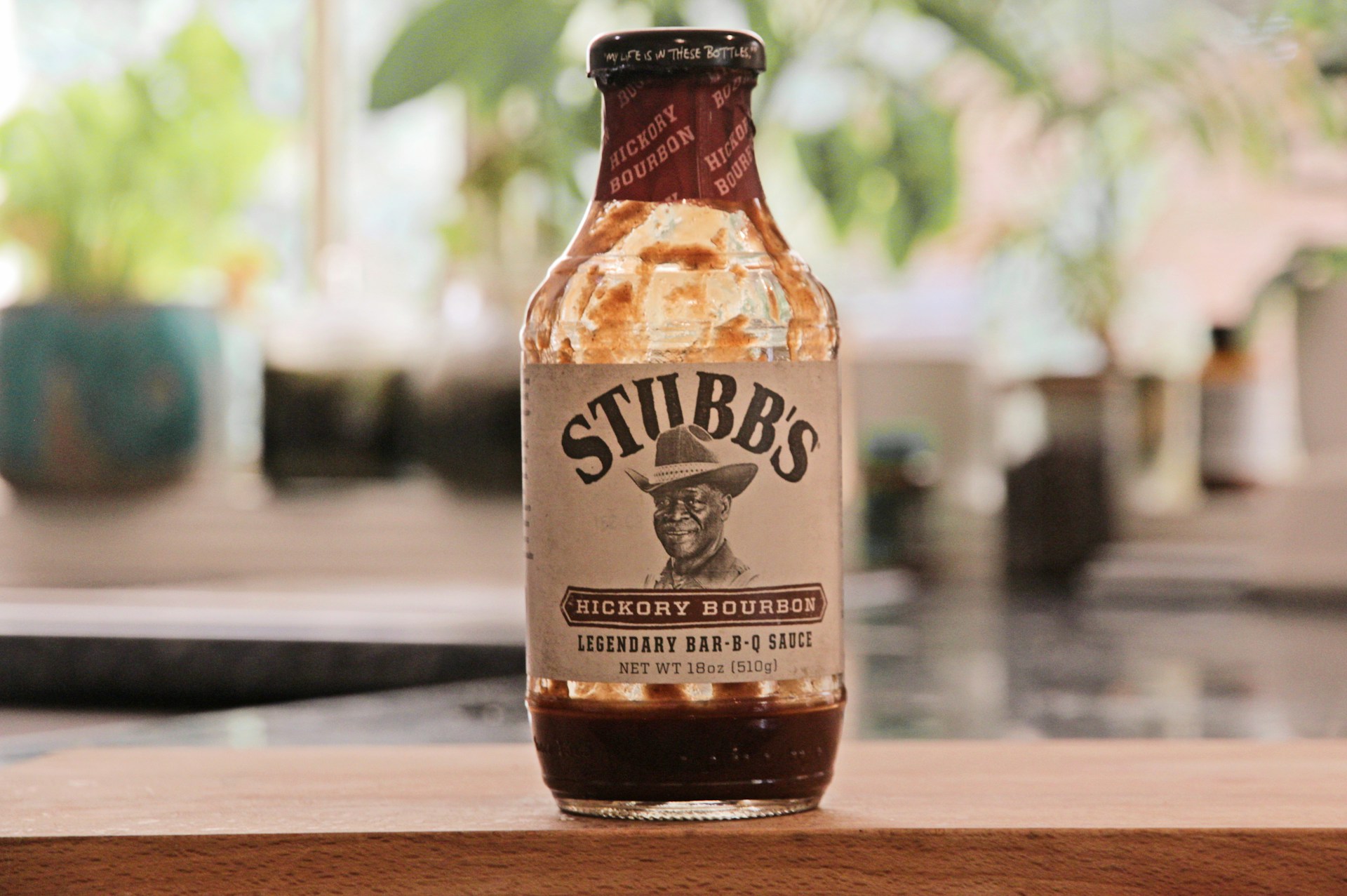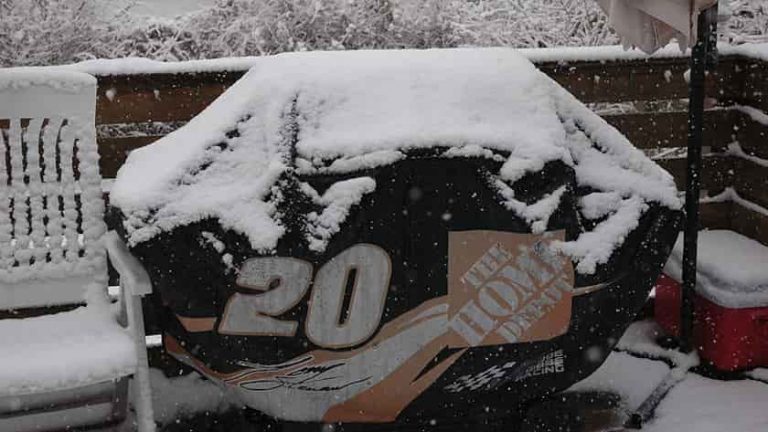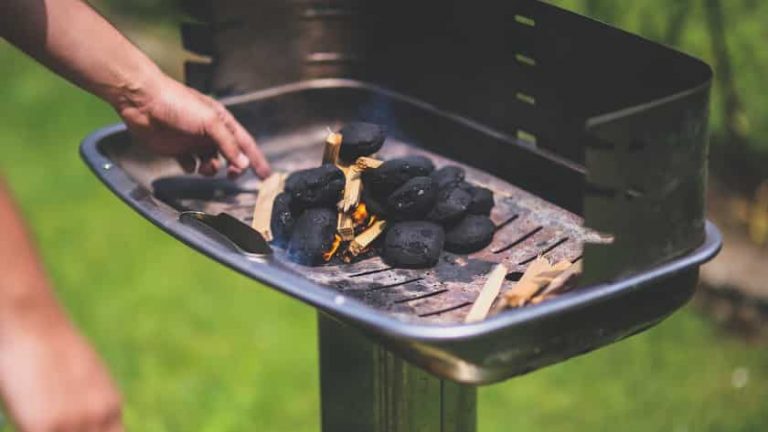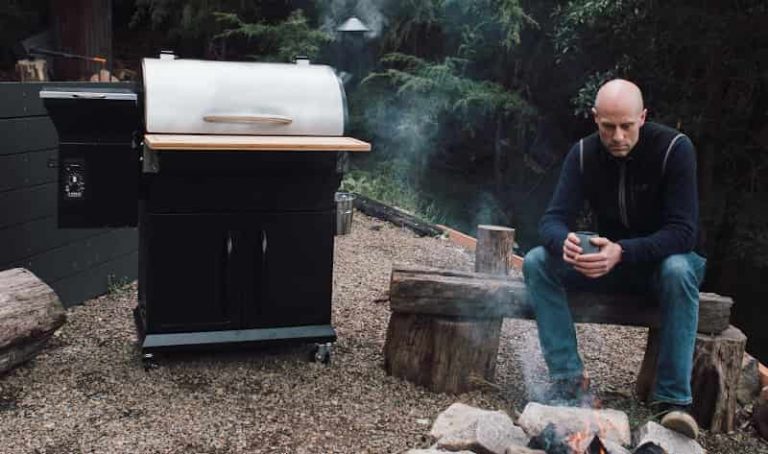How to Make Hawaiian BBQ Sauce: Perfect Huli Huli Recipe
Craving a sweet and tangy flavor explosion? Making your very own Hawaiian BBQ sauce is simpler than you think. Say goodbye to store-bought versions laden with preservatives and hello to a homemade concoction bursting with tropical goodness. In this guide, we’ll dive into the contrasting flavors of pineapple, soy sauce, and brown sugar that define this iconic condiment. From mastering the perfect balance of sweetness and acidity to infusing smoky undertones, get ready to elevate your grilling game with this irresistible recipe.
Hawaiian BBQ Sauce Essentials
Ingredients
To make Hawaiian BBQ sauce, you’ll need essential ingredients like soy sauce, brown sugar, garlic, ginger, and pineapple juice. These components create the signature sweet and tangy flavor of the sauce. You can also customize your recipe by adding ingredients such as honey for extra sweetness or chili flakes for a spicy kick. Using high-quality ingredients is crucial to achieve an authentic taste. Freshly squeezed pineapple juice and top-grade soy sauce can elevate the overall flavor profile of the sauce.
Origin of Huli Huli
The Huli Huli sauce has a rich historical background in Hawaiian cuisine. It was first created by Ernest Morgado in 1955 when he began grilling chicken outdoors using a special marinade that eventually became known as “Huli Huli.” The term “huli” means “turn” in Hawaiian, referencing the method of repeatedly turning the chicken while cooking to ensure even flavor distribution. Over time, this traditional recipe has evolved to include various local ingredients that reflect the cultural significance of Hawaii’s diverse culinary heritage.
Nutrition Info
. While it offers some health benefits from natural ingredients like garlic and ginger which are known for their potential anti-inflammatory properties, excessive consumption may lead to higher sugar intake which could be a drawback for individuals monitoring their sugar levels.
Preparing Your Ingredients
Measuring accurately is crucial when making Hawaiian BBQ sauce to ensure a consistent and delicious flavor. Using the right measuring tools, such as liquid and dry measuring cups, ensures precision in adding ingredients like soy sauce, pineapple juice, and brown sugar. The key to creating a well-balanced sauce lies in accurately measuring each component.
Inaccurate measurements can lead to an imbalanced flavor profile or even a ruined batch of sauce. For instance, too much soy sauce can overpower the sweetness of pineapple juice, while excessive brown sugar can make the sauce overly sweet. To avoid common measurement mistakes, it’s essential to level off dry ingredients like sugar or flour with a straight edge for accuracy.
There are numerous options for creating unique flavor profiles. For example, adding grated ginger or minced garlic can enhance the savory notes of the sauce. Substituting honey for brown sugar offers a different depth of sweetness while catering to dietary restrictions.
The impact of ingredient variations on taste and texture is significant; altering the ratio of sweet to savory components can result in tangier or sweeter sauces. Furthermore, using fresh fruits versus canned ones may affect both the consistency and overall fruitiness of the barbecue sauce.
Crafting the Sauce
Mixing Techniques
To create a flavorful Hawaiian BBQ sauce, it’s crucial to employ various methods for combining ingredients effectively. Thorough mixing ensures even distribution of flavors, giving your sauce a balanced taste. For achieving the desired consistency, consider using techniques like whisking or blending to ensure a smooth and uniform texture. A tip for ensuring proper mixing is to gradually add each ingredient while continuously stirring to prevent lumps from forming.
Cooking Steps
When cooking the Hawaiian BBQ sauce, follow step-by-step instructions meticulously. Use recommended equipment such as a heavy-bottomed pan and techniques like simmering to achieve the perfect consistency and flavor infusion. Key factors during the cooking process include controlling heat levels, monitoring cooking duration, and adjusting ingredient ratios based on personal preference.
Texture and Consistency
The desirable texture of Hawaiian BBQ sauce should be smooth with a slightly thick consistency that allows it to coat meats when used as a baste or dipping sauce. Factors influencing its final texture include cooking duration, temperature control, and ingredient proportions. To adjust the texture according to personal preference, consider altering ingredient quantities or simmering durations until reaching the desired thickness.
Flavor Variations
Recipe Tweaks
Making small adjustments to the base recipe can result in a significant difference in the overall taste of Hawaiian BBQ sauce. For those who enjoy a sweeter flavor profile, increasing the amount of brown sugar or adding pineapple juice can enhance the sweetness. Conversely, for individuals who prefer a tangier taste, incorporating additional vinegar or citrus juice can help achieve this desired flavor.
Furthermore, those looking to intensify the smoky notes in the sauce may consider adding a touch of liquid smoke or increasing the amount of smoked paprika. On the other hand, if there’s a desire to tone down the heat level, reducing or omitting ingredients like cayenne pepper and hot sauce can help create a milder version of the sauce.
These simple modifications allow individuals to tailor their Hawaiian BBQ sauce according to their specific preferences and cravings without deviating too far from its authentic essence.
Alternative Ingredients
Exploring alternative ingredients offers an opportunity to introduce unique flavors and textures into Hawaiian BBQ sauce while potentially impacting its authenticity and overall taste. For instance, substituting traditional soy sauce with tamari provides a gluten-free alternative without compromising on umami richness.
Moreover, replacing regular ketchup with spicy or sriracha-infused ketchup infuses an extra kick into the sauce while maintaining its familiar tomato-based foundation. Using honey instead of brown sugar imparts floral undertones and creates a slightly different depth of sweetness.
Storing the Sauce
Refrigeration Tips
Refrigeration is key. Proper storage guidelines involve transferring the sauce into an airtight container before placing it in the refrigerator. This helps maintain its freshness and prevents contamination.
Refrigerated Hawaiian BBQ sauce has a maximum shelf life of approximately 2-3 weeks. However, this can vary based on factors such as the ingredients used and potential cross-contamination during preparation. While refrigeration slows down bacterial growth, it also affects flavor development over time.
Shelf Life
The shelf life of homemade Hawaiian BBQ sauce is influenced by various factors including the quality of ingredients used, level of acidity, and storage conditions. Signs indicating spoilage or expiration include changes in color, texture, or smell. If any of these are noticed, it’s best to discard the sauce.
To extend the shelf life of your homemade Hawaiian BBQ sauce, store it in a cool and dark place away from direct sunlight or heat sources. Properly sealed containers can help prevent air exposure which can lead to quicker spoilage.
Serving Suggestions
Dish Pairings
Hawaiian BBQ sauce is a versatile condiment that pairs well with a variety of dishes. It complements grilled meats such as chicken, pork, and beef, adding a sweet and tangy flavor to the smoky goodness of barbecued proteins. The sauce also works wonderfully with seafood like shrimp or salmon, creating a tropical twist on traditional barbecue flavors.
Consider balancing its bold flavors with sides like grilled pineapple, coconut rice, or a fresh mango salad. These accompaniments help enhance the tropical essence of the sauce while providing contrasting textures and tastes for an overall satisfying dining experience.
For those who enjoy experimenting in the kitchen, Hawaiian BBQ sauce can be used beyond its traditional applications. Think outside the box by incorporating it into recipes for pulled pork sliders, Hawaiian pizza, or even as a glaze for roasted vegetables. By doing so, you can inspire creativity in your cooking while introducing unexpected yet delightful flavors to familiar dishes.
Creative Uses
One creative use for Hawaiian BBQ sauce is employing it as a marinade for tofu or tempeh before grilling or baking them. This not only infuses these plant-based proteins with rich flavor but also introduces an exciting fusion of cultures into your culinary creations.
Another innovative application is using the sauce as a dipping condiment for appetizers such as sweet potato fries, spring rolls, or chicken wings. Its unique blend of sweet and savory notes elevates these snacks to new heights while offering guests an enticing taste experience at gatherings and parties.
Tips for Perfect Hawaiian BBQ Sauce
Consistency Checks
When making Hawaiian BBQ sauce, it’s crucial to ensure the right consistency. One method for evaluating consistency is observing how the sauce drips off a spoon – it should flow smoothly but not be too runny. Another indicator of desirable consistency is when the sauce coats the back of a spoon without running off immediately. Undesirable consistency may result in a watery or overly thick sauce, which can affect the flavor and texture.
To achieve optimal consistency, adjustments can be made by adding more liquid to thin out a thick sauce or incorporating cornstarch slurry to thicken a runny one. By gradually adjusting these elements, you can reach the perfect balance that complements your dish.
Taste Adjustments
Fine-tuning the flavor profile of your Hawaiian BBQ sauce according to personal preference is essential. Balancing sweet, savory, and tangy elements in the sauce requires careful consideration. For instance, if your barbecue sauce tastes too sweet, balancing it with some acidity like vinegar or citrus juice can help counteract the sweetness while enhancing its overall flavor.
Understanding how different adjustments impact overall taste also plays an integral role in achieving an exceptional Hawaiian BBQ sauce. For example, adding pineapple juice can enhance sweetness and provide a tropical note to the sauce, whereas soy sauce contributes depth and umami flavors.
DIY Sauce Alternatives
Similar Recipes – Exploring related sauces with similar flavor profiles or origins
If you enjoy the sweet and tangy flavors of Hawaiian BBQ sauce, there are other similar recipes that you might find appealing. For example, teriyaki sauce shares some common elements with Hawaiian BBQ sauce, such as the use of soy sauce and sugar for a sweet and savory combination. Korean bulgogi marinade offers a comparable balance of sweetness and saltiness, making it an interesting alternative to explore.
When comparing these options to Hawaiian BBQ sauce, it’s essential to note the contrasting characteristics. While teriyaki tends to be slightly thinner in consistency and emphasizes the sweetness more prominently than the smokiness found in Hawaiian BBQ sauce, bulgogi marinade often features pear puree for natural sweetness along with soy sauce for a rich umami flavor profile.
Experimenting with related recipes can open up new culinary possibilities. By trying out different variations of sauces with similar flavors or origins, you can discover unique combinations that suit your taste preferences perfectly.
Homemade vs. Store-Bought – Advantages and disadvantages
Making Hawaiian BBQ sauce from scratch offers several advantages over store-bought options. When preparing it at home, you have full control over the ingredients used which allows for customization according to personal taste preferences or dietary restrictions. Moreover, homemade sauces often boast fresher flavors compared to their shelf-stable counterparts.
On the other hand, store-bought Hawaiian BBQ sauces provide convenience without requiring any preparation time or effort on your part. They also offer consistent quality across purchases while saving time in the kitchen. However, they may contain preservatives or additives that some individuals prefer to avoid due to health concerns.
Ultimately, whether you choose homemade or store-bought Hawaiian BBQ sauce
Engaging with Your Creation
Creating your own Hawaiian BBQ sauce can be a rewarding experience, and once you’ve perfected your recipe, there are various ways to share the joy of your creation. You can consider gifting or sharing your homemade Hawaiian BBQ sauce with friends and family, allowing them to savor the flavors of this unique creation. Whether it’s for a special occasion or just as a gesture of kindness, homemade sauces often make delightful gifts.
When presenting your homemade Hawaiian BBQ sauce as a gift, consider packaging suggestions that enhance its appeal. A simple yet elegant option could be using mason jars adorned with colorful fabric lids or ribbons. Attaching personalized labels or tags can add a thoughtful touch to the presentation. By sharing your culinary talent in this way, you not only spread joy but also showcase the effort and care put into making the sauce.
Encouraging readers to share their experiences with making Hawaiian BBQ sauce, along with any feedback on recipe variations or creative uses they have discovered is an excellent way to foster community engagement. Inviting comments on personal connections to Hawaiian cuisine can spark meaningful conversations about cultural appreciation and shared culinary experiences.
Closing Thoughts
Congratulations! You’ve now mastered the art of creating your very own Hawaiian BBQ sauce. Embrace your inner culinary artist and experiment with different flavor variations to suit your taste buds. Don’t forget to share your delicious creations with friends and family at your next backyard barbecue.
Now that you’re equipped with the essential know-how, it’s time to get saucy in the kitchen. So, grab those ingredients, unleash your creativity, and let the sweet and tangy flavors of Hawaii elevate your grilling game. Get ready to impress everyone with your homemade Hawaiian BBQ sauce!
Frequently Asked Questions
How do I store the Hawaiian BBQ sauce?
You can store the Hawaiian BBQ sauce in an airtight container in the refrigerator for up to two weeks. Make sure to let it cool completely before storing and give it a good stir before using.
Can I customize the flavor of the sauce?
Absolutely! You can adjust the sweetness, tanginess, or spiciness by altering the quantities of ingredients like brown sugar, vinegar, or hot sauce. Experiment with different ratios until you find your perfect blend.
What are some DIY alternatives for this sauce?
If you’re looking for a quick alternative, you can mix teriyaki sauce with pineapple juice and a touch of honey to create a similar flavor profile. It won’t be exactly the same, but it’s a tasty substitute in a pinch.
How should I engage with my creation while making this sauce?
Think of crafting this Hawaiian BBQ sauce as an adventure rather than just following instructions. Taste as you go along and make adjustments based on your preferences. Embrace your inner chef and have fun experimenting!
Any tips for achieving that perfect balance of flavors in the sauce?
Balancing sweet, savory, and tangy flavors is key. Start with small amounts when adding strong-flavored ingredients like soy or Worcestershire sauce – you can always add more later if needed. Remember, it’s easier to add than subtract!






